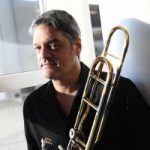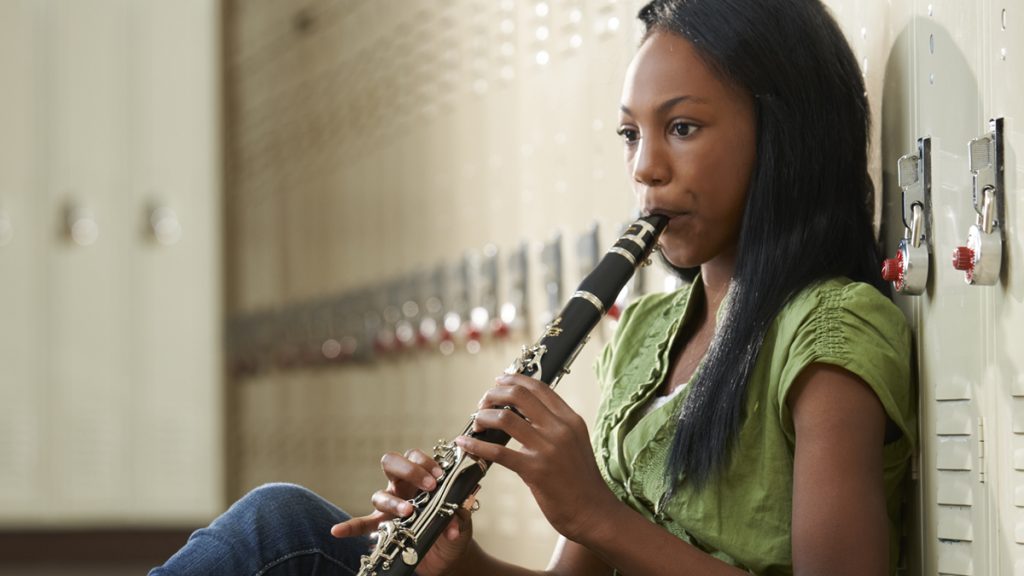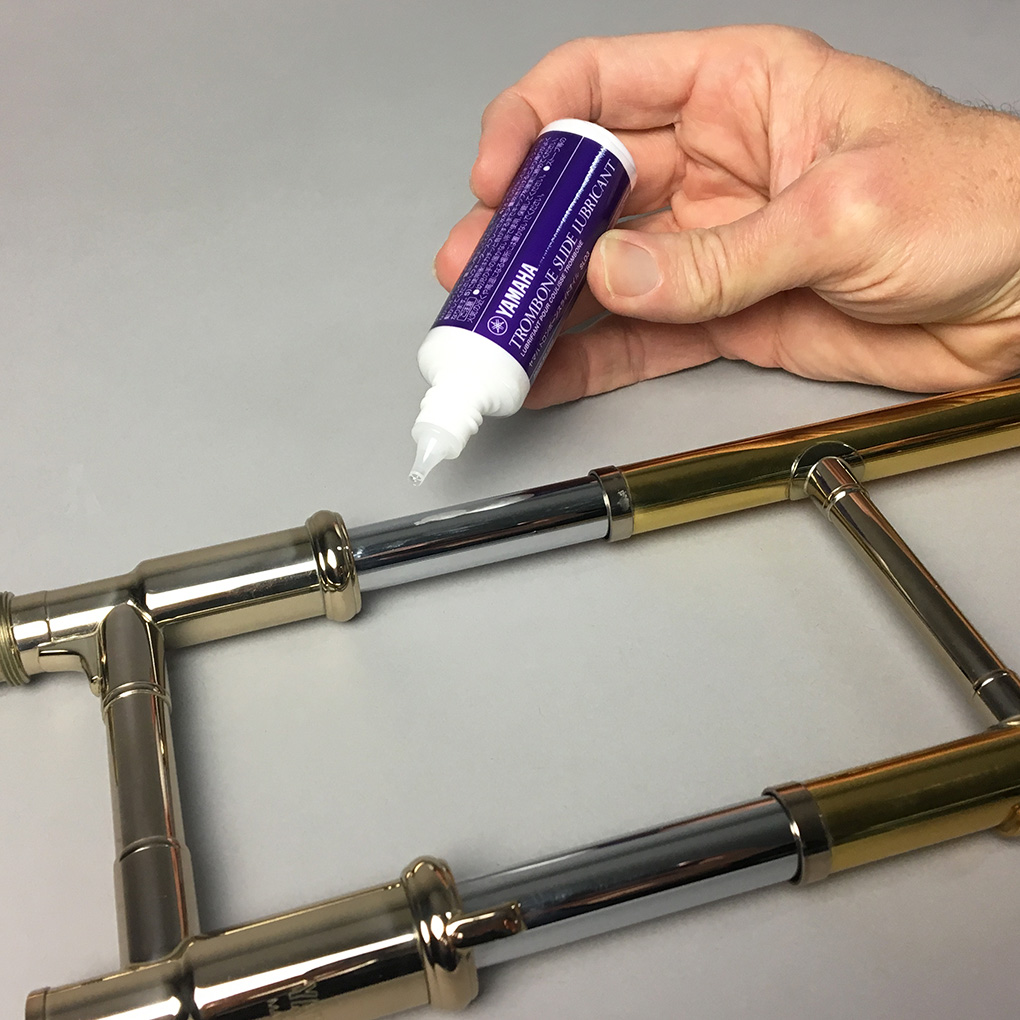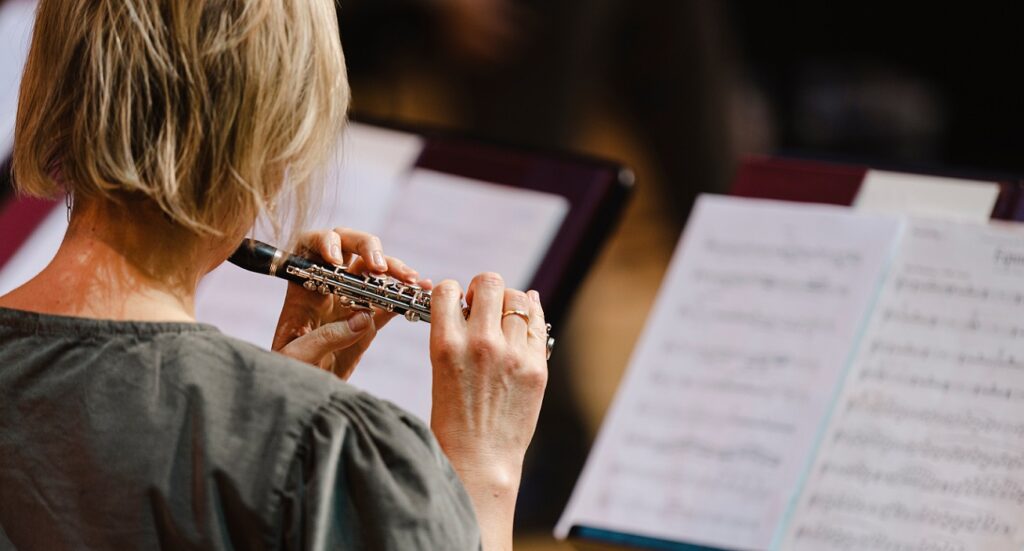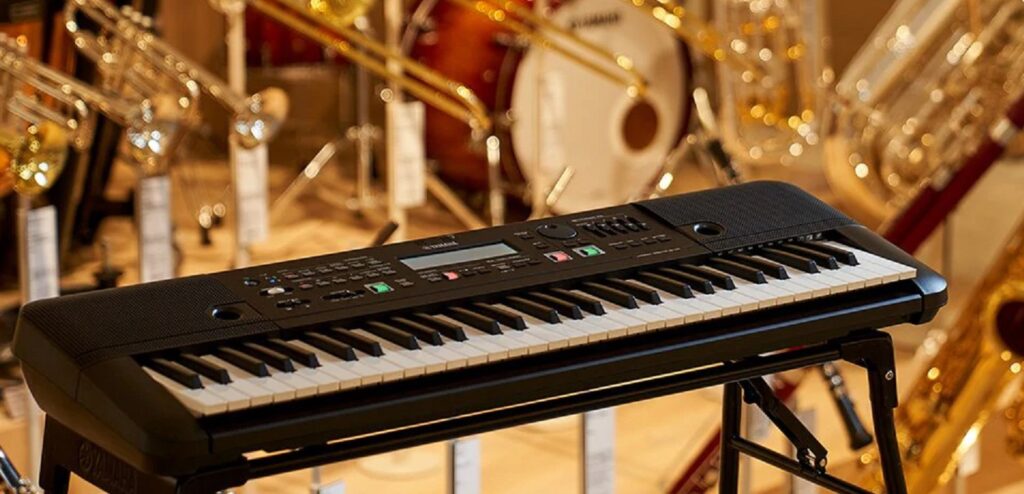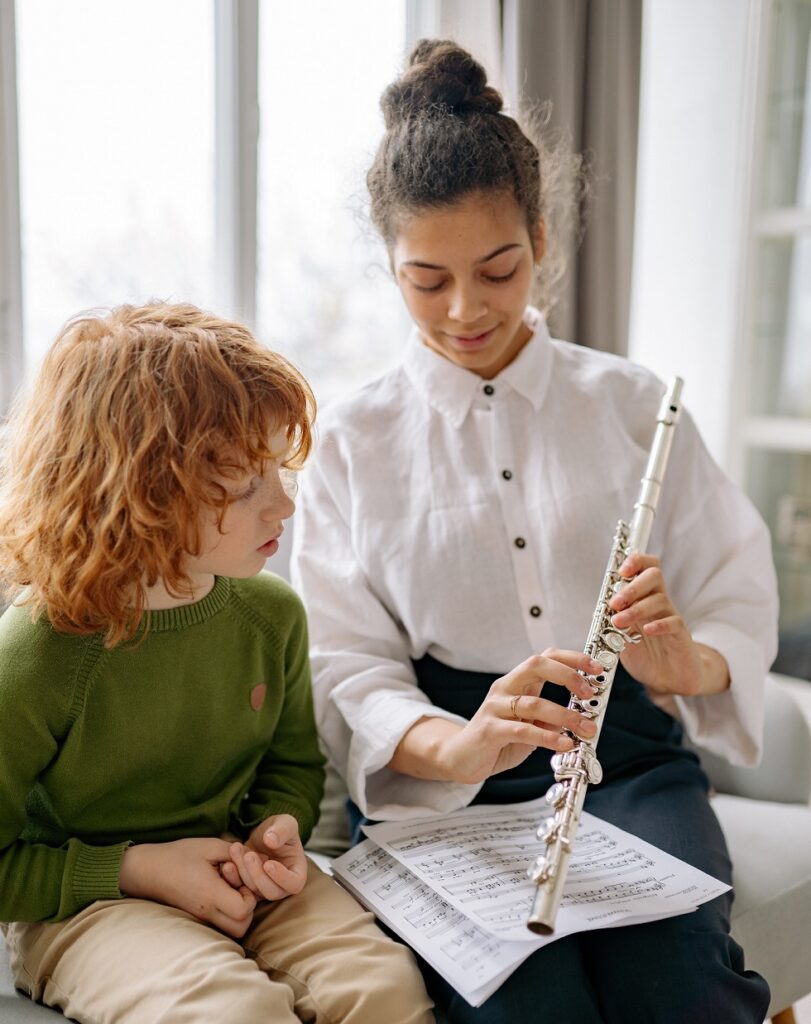Fix It: Trombone Teaching Tips
Try these expert tips on fixing common errors that trombone students make.
What makes the trombone special? The sound of the trombone is one of the most profound and glorious of the brass family.
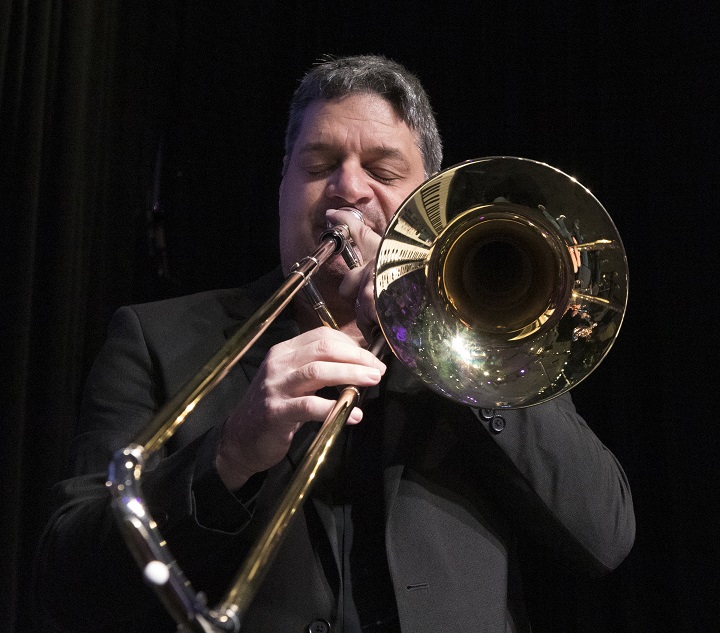 As composer Hector Berlioz said, “The trombone is the true head of the family of wind instruments … it has all the serious and powerful tones of sublime musical poetry, from religious, calm and imposing accents to savage, orgiastic outburst.”
As composer Hector Berlioz said, “The trombone is the true head of the family of wind instruments … it has all the serious and powerful tones of sublime musical poetry, from religious, calm and imposing accents to savage, orgiastic outburst.”
How to Fix Lack of Air Stream/Direction
How to Fix Syncing Movement Between Slide and Articulation
How to Fix Posture When Sitting in the Ensemble
Throughout my years as a professional player and teacher, countless people have asked me why I chose to play the trombone. My father played the trombone and was the principal trombonist of the Venezuela Symphony Orchestra. I remember going with him to orchestra rehearsals and recording session of all sorts. But when I started in the music world at 7 or 8 years old, my first instrument was the violin. I guess I was too small to hold the trombone, but I loved the way it sounded and listened to my dad practice and play in all kinds of ensembles. When I was 9, I started playing the trumpet, but the trumpet and I didn’t get along even though I liked the instrument deeply — and still do. It wasn’t until I was 12 that I was able to finally switch to the trombone. At that moment, I found my true passion for the instrument and music making.
By traveling around the world, I have observed common problems and mistakes that trombone students make. And I want to help them approach, deal with and ultimately solve these problems.
Fix It: Lack of Air Stream/Direction
When I get to work with students alone or as a member of Boston Brass, the main issue I encounter is the improper use of air when students play the trombone. Students always struggle with how to properly and efficiently use air.
It is vital to emphasize to students that breathing is a natural process, and it is the main resource they need to play the trombone. It is this breathing-as-second-nature process that helps the lips vibrate in order to produce sound. The vibration of the lips is created by the air stream that goes through the small aperture of their lips. This is what we call sound. Students cannot recognize good sound if they are not using proper and efficient air.
I always say that the trombone is the expansion of the human voice because it has the same register as the tenor voice. In order to make music, we need to “sing” through our instruments, and that is why it is so important to have proper and efficient air.
THE YSL-350C TROMBONE: Built for your beginning students!
The “Breathing Gym” process — created by the late great Boston Brass tubist Sam Pilafian and renowned tubist Patrick Sheridan — is the perfect approach to help students focus their breathing and be aware of how air needs to be used. Teachers must emphasize the similarity between musicians blowing air through their instruments and singers using air to make their vocal cords vibrate to sing.
Use the “Breathing Gym” daily as a tool to identify, process and deliver how to use air. This will definitely help students focus on how to properly create a nice sound and blow enough steady air to play one note or a set of notes with one continued air stream.
It is imperative to have students not only hear phrases, melodies or parts in their minds, but also to sing them before they even play them on the trombone.
They should listen to as much music, including singers, as they can. This is key to develop this concept of singing through our instruments. Just like Frank Sinatra said, “It was my idea to make my voice work in the same way as a trombone or violin — not sounding like them, but ‘playing’ the voice like those instruments.”
Fix It: Syncing Movement Between Slide and Articulation
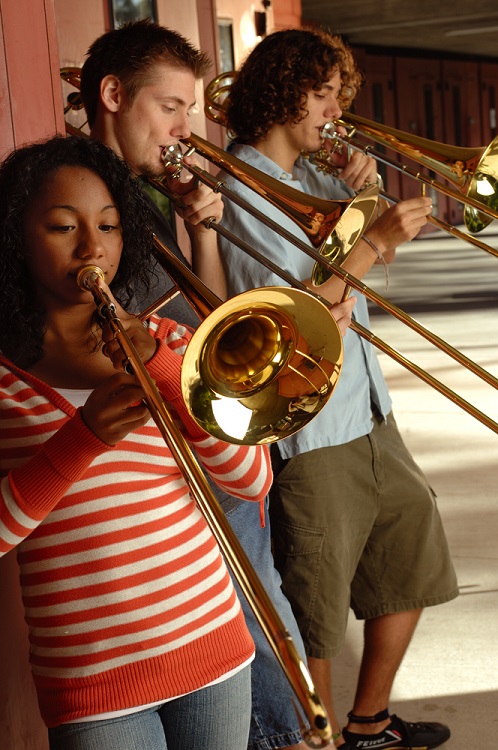 Another big issue for trombone students is syncing between the slide and the articulation when they play. What makes the trombone unique compared to other brass instruments is how it changes notes or pitch. You change notes on trumpets, French horns and tubas by pressing a key or valve. Trombonists have to deal with a slide to change notes, and we also need to match articulation and phrasing with the other instruments. In many cases, the slide movement is late or slow as players go from one note to the other, or they stop the air (note) to move the slide to reach the next pitch. Either scenario is a big mistake.
Another big issue for trombone students is syncing between the slide and the articulation when they play. What makes the trombone unique compared to other brass instruments is how it changes notes or pitch. You change notes on trumpets, French horns and tubas by pressing a key or valve. Trombonists have to deal with a slide to change notes, and we also need to match articulation and phrasing with the other instruments. In many cases, the slide movement is late or slow as players go from one note to the other, or they stop the air (note) to move the slide to reach the next pitch. Either scenario is a big mistake.
To address this issue, begin by focusing on playing notes with no articulation. I play the first note using my tongue to have a clean start; the next notes will be played with just the slide movement and no articulation.
Students should metronomes and their tuners at all times. (I recommend the TonalEnergry Tuner and Metronome app). It is very important to breathe (as explained in the “Air Stream/Direction” section above) and play in time.
Another exercise to help with syncing movement between the slide and articulation is to play scales (quarter notes, 68-70bpm), making sure that your students move exactly on time for each note, not before. Focus on having that pitch change on top of the beat so that the note they are playing will sound longer to the next one. Make sure that students are relaxed so when they move their arms to change pitch, the instrument doesn’t move. The more you emphasize this, the better your students will sound, and they will be more aware of what happens when they do it wrong.
THE YAMAHA EDUCATOR NEWSLETTER: Join to receive a round-up of our latest articles and programs!
Fix It: Posture when Sitting in the Ensemble
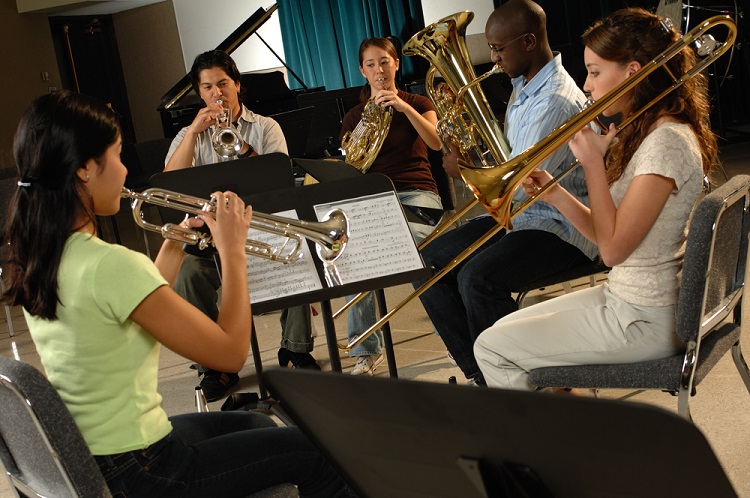 Students with bad posture in band/ensembles may not seem like a big issue, but it is. Posture affects breathing and sound.
Students with bad posture in band/ensembles may not seem like a big issue, but it is. Posture affects breathing and sound.
If we don’t breathe properly (again, going back to “Air Stream/Direction”), we won’t produce good sound. If we don’t breathe efficiently, we won’t have endurance. If we don’t sit properly, we won’t be able to breathe or even hold our trombone correctly.
Proper posture allows our bodies to be balanced and relaxed. First, make sure students are seated with their feet flat on the floor. Their knees should be directly over their ankles. Both hip bones should be grounded to the chair. Most importantly, students should be seated at the front edge of their chairs — their backs should be away from the back of the chair so they can feel the curve of their spines. With that back arch, they can feel how much air fills their lungs when they breathe.
To show students the difference in breathing, have them breathe deeply while sitting with their backs against the back of the chair. Then have them sit at the front edge of the chair and breathe deeply again. Tell students to use their hands to feel the arch of their backs and have them listen to the sounds of their breathing.
Also, sitting at the back of the chair results in an unbalanced posture, forcing students to point their bell/sound to the ground, which makes it more difficult to move the slide.
As teachers, you will always have some students who need to be guided and told what to do and how to practice routine exercises and warmups. But the students who are invested in their musical education are the ones who will motivate you to do all you can to make them better musicians. Just give them the tools they need to be fired up, and they will spread their drive, attitude and enthusiasm to the other members of the ensemble.
As I’ve stated before, one of my main recommendations to teachers, students and avid instrumentalists is to listen to music — not just the music related to your instrument, but music in general. You are going to be as good as your ears are. The more you hear, the better musician and artist you will be.










